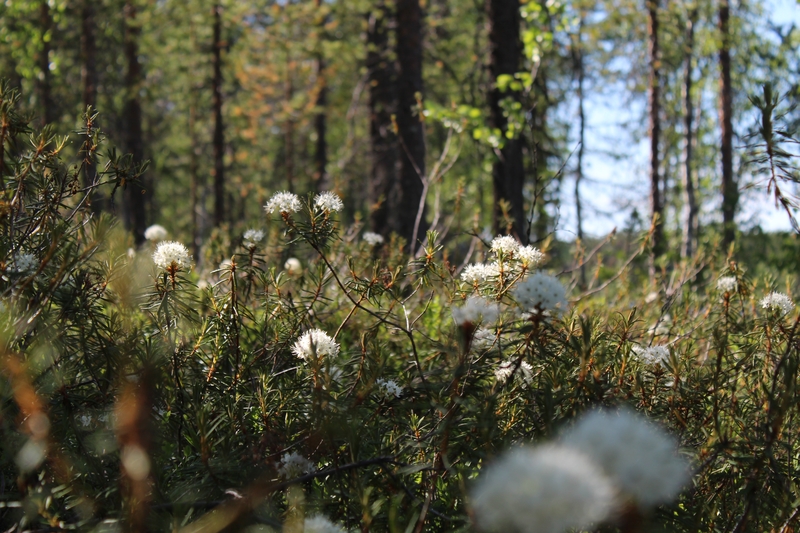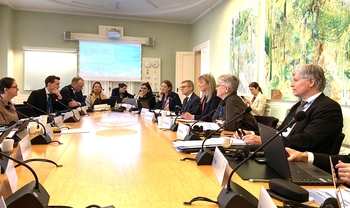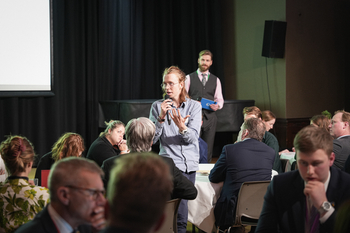New report: Nature-based solutions to halt climate and boost biodiversity

The world is facing two major global sustainability crises, the loss of biodiversity and climate change. The new report by the Intergovernmental Science-Policy Platform on Biodiversity and Ecosystem Services (IPBES Denmark) and the Center for Macroecology, Evolution and Climate at the University of Copenhagen presents policy options for the conservation and restoration of natural areas to help address both issues.
In brief, drained wetlands need water and forests need to grow freely and age properly.
Wild nature is part of the solution to climate change
The scientists behind the report reviewed a number of case studies from the Nordic countries and identified areas where biodiversity can be improved and greenhouse gas emissions reduced.
“In brief, drained wetlands need water and forests need to grow freely and age properly,” says Lars Dinesen, special consultant, IPBES Denmark.
“Our mapping exercise shows that work on the conservation and restoration of natural ecosystems, such as wetlands and forests, is crucial for biodiversity and important for the climate. It will provide habitats for endangered species, and the ecosystems’ natural uptake and storage of CO2 will help counteract climate change,” adds Anders Højgård Petersen, special consultant, Center for Macroecology, Evolution and Climate (CMEC) Globe Institute, University of Copenhagen.
More water in a raised bog in Jutland has reduced CO2 emissions by 10,500 tons p.a.
One of the case studies in the report looks at the restoration of Lille Vildmose in Denmark, one of the biggest raised bogs in the north of Europe and the largest remaining active raised bog in Denmark. However, the preserved area of 21 km2 corresponds to only one-third of the original size, the rest having been destroyed by drainage, peat extraction, etc.
A naturally high water level has preserved in the active raised bog and higher water levels restored in much of the destroyed parts, cutting CO2 emissions by an estimated 10,500 tons p.a. and significantly increasing the biodiversity values in a unique natural area.
Other case studies included restoration of 35 Swedish mires, the possibility of restoring 20,000 km2 of drained peatlands in Finland in areas where forestry is no longer profitable and the re-establishment of almost extinct types of forest in Norway and Iceland. The examples in the report and its general focus are in line with the EU Biodiversity Strategy for 2030, which Denmark and the other member states adopted in October 2020. Of the 25% of the EU budget already allocated to climate action, the strategy envisages a significant proportion being invested in nature-based solutions.
The report also includes ten policy options based on the eight case studies, scientific literature in general and a review of the current political agreements.
- Restoring nature, as exemplified in this report, provides an excellent option for Nordic countries to align with and take the lead in meeting international biodiversity and climate policy targets through nature-based solutions.
- A halt to new drainage activities in mires is essential to preserve natural carbon stocks and conserve biodiversity.
- Nordic countries can prevent emissions of carbon dioxide and initiate long-term biodiversity restoration by rewetting drained mires and peatlands including areas currently used for farming, forestry or peat excavation.
- Strict protection of existing old growth forests by the exclusion of forestry will safeguard important biodiversity and contribute to climate change mitigation through the reservation of natural carbon stocks.
- Restoration of forest ecosystems allowing them to develop towards natural old growth forests is essential to biodiversity conservation and contributes to climate change mitigation and ecosystem resilience.
- Conservation actions in managed forests can be a supplementary option, which is significantly less effective for preserving biodiversity, but with the potential to obtain or retain the possible climate benefits and economic return from forestry.
- Improved documentation of the greenhouse gas dynamics and biodiversity of intact and restored ecosystems preferably at the same location is essential to develop informed and efficient nature-based solutions and strategies.
- Planning at large spatial scales will increase the efficiency and facilitate both local and overall synergies between biodiversity conservation and climate change mitigation.
- Enhanced national mechanisms to provide advice and communicate results of scientific research on biodiversity and climate change will improve decision-making and public debate.
- Ambitious cross-sectorial and cross-disciplinary policies can facilitate the wider use of cost-efficient nature-based solutions to meet the biodiversity and climate challenges.




